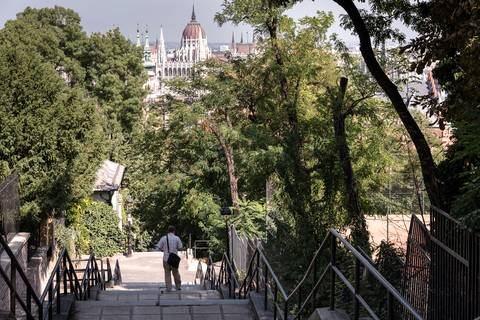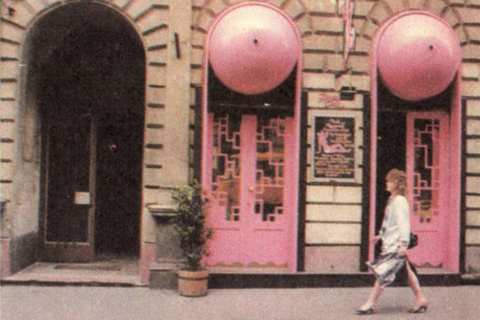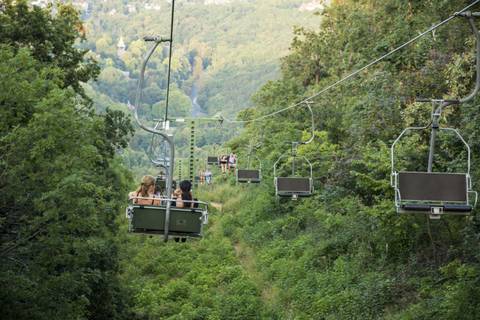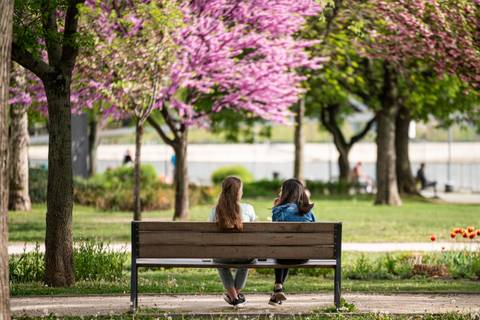We often pass by secret doors, but we don't realise what they hide. We can glimpse past eras, mysterious courtyards, and remarkable universes by stepping through their thresholds.
Unveiling a Forgotten Jewel: The Royal Waiting Room of Nyugati Station
Imagine a hidden portal within the bustling Nyugati Station. Not just any door, but an unassuming turquoise one marked with a cryptic inscription: ‘Viribus Unitis,' meaning ‘With United Forces.' This isn't your ordinary entrance; it's a gateway to a bygone era.
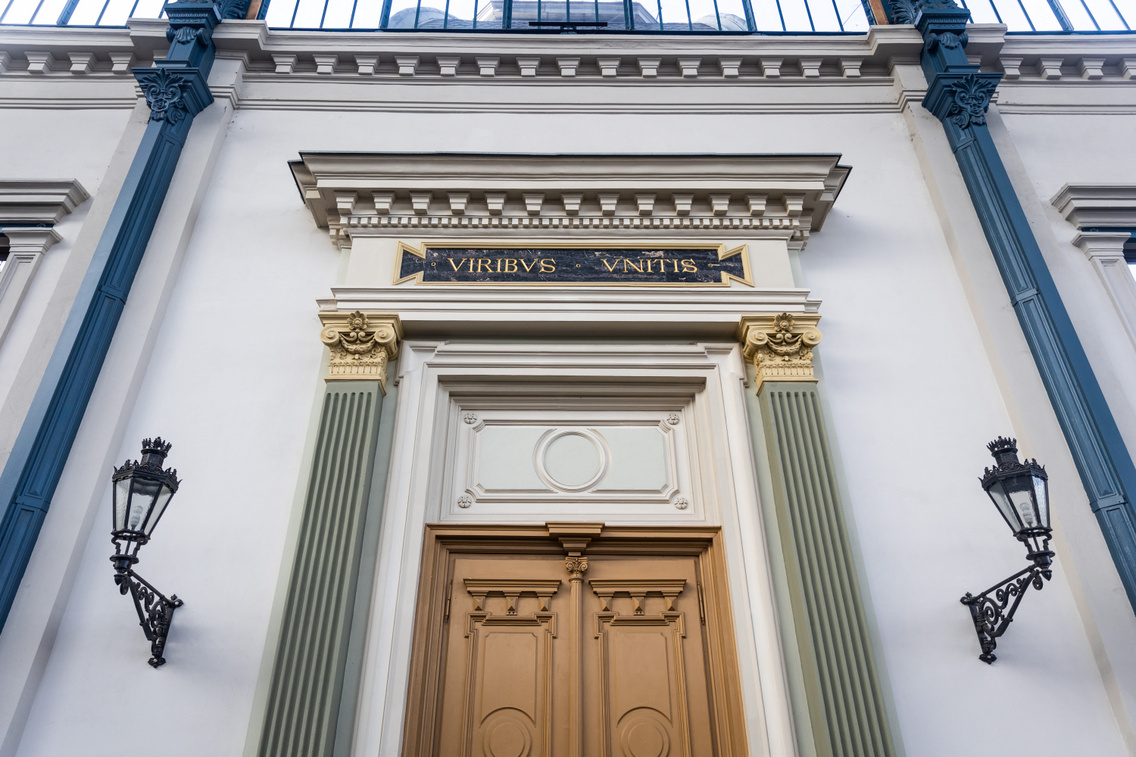
Step through, and you'll find yourself in the forgotten treasure of the station: the Royal Waiting Room. This was the private sanctuary of Emperor Franz Joseph and his beloved Sissi, Empress Elisabeth. While the passage of time has unfortunately claimed the original royal interiors, the grandeur of the waiting room itself remains.
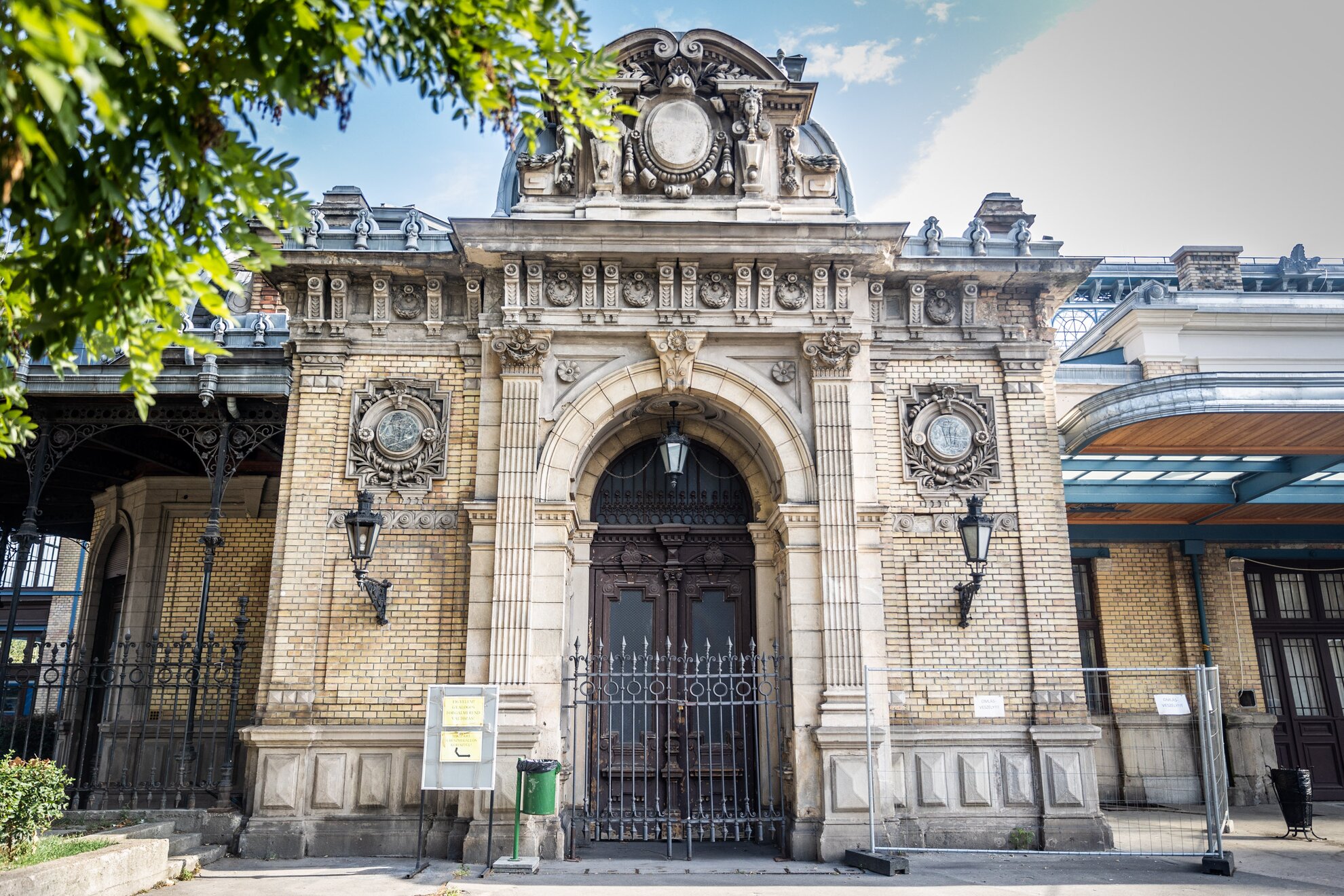
Think of it as a miniature palace within the station. Luxuriously appointed, the room boasts intricate details, gleaming gold surfaces, and an air of refined elegance. It's easy to picture the emperor and empress waiting for their train in opulent comfort. Sadly, Budapest once had another royal waiting room at the Keleti Station. However, the ravages of the Second World War left it nothing more than a memory.
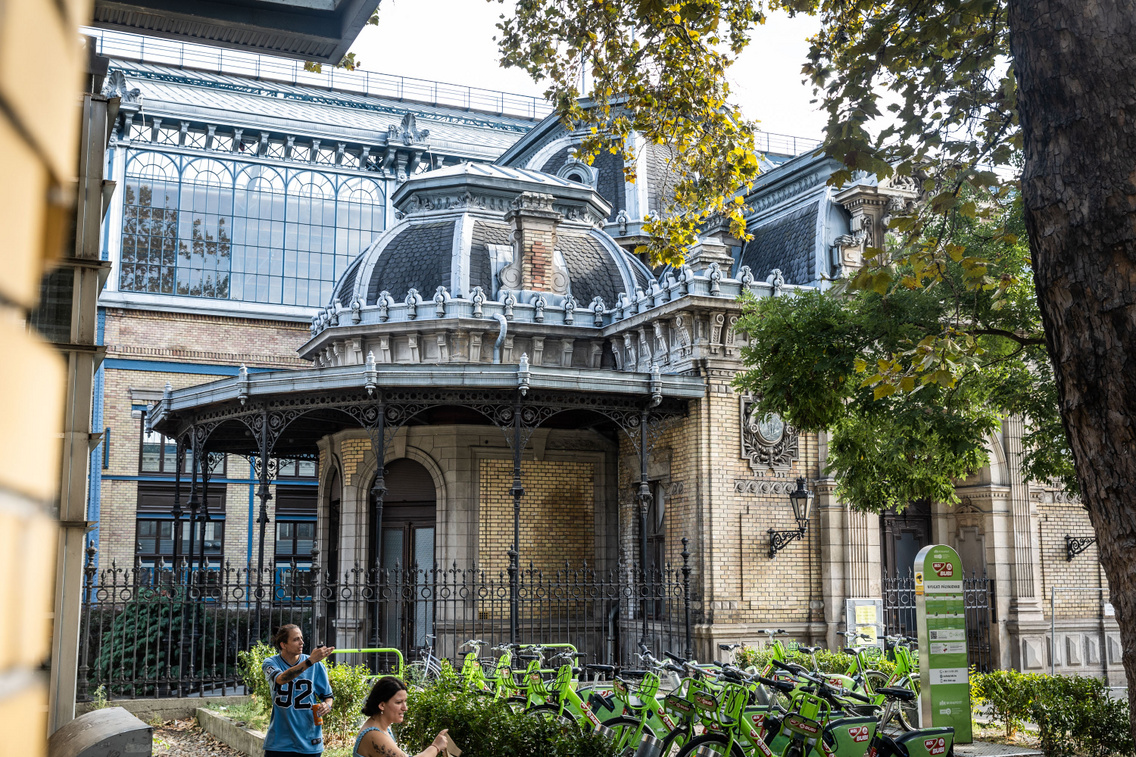
A secret garden and wine fountain inside the oldest house in downtown Budapest
Unveil a hidden gem tucked away at 12 Vitkovics Mihály utca. Push open the gate and discover the enchanting courtyard of Holló Workshop, a haven for handcrafted ceramics and vibrantly painted objects. But the magic doesn't stop there. Step further and find yourself in a secret garden, a personal creation by owner László Holló.
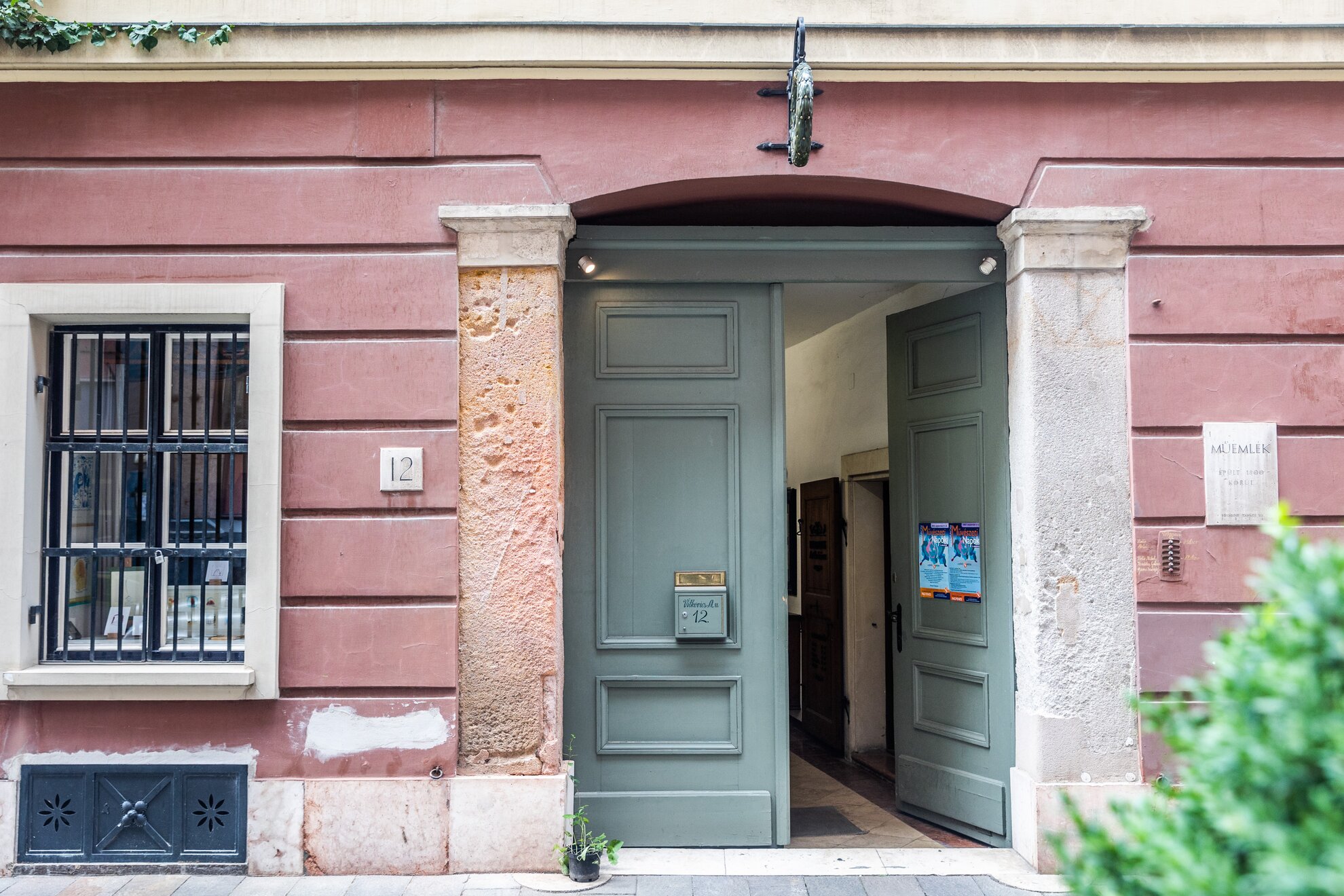
This verdant sanctuary boasts an array of unique flora, from the captivating purple blooms of lilyturfs to the exotic charm of windmill palms . Flowering bar-room plants add a touch of whimsy, while pomegranate trees whisper promises of ruby-red fruit.

And there's more! A captivating red marble wall fountain graces the courtyard. Legend whispers a curious tale: this fountain dispenses not water, but wine! A hidden jug within allows you to pour your own favourite vintage, transforming the fountain into a magical dispenser. The Holló Workshop, the secret garden, and the Hereditas Gallery, all housed within the same building, welcome visitors with open arms. So, step through the gate and prepare to be enchanted.
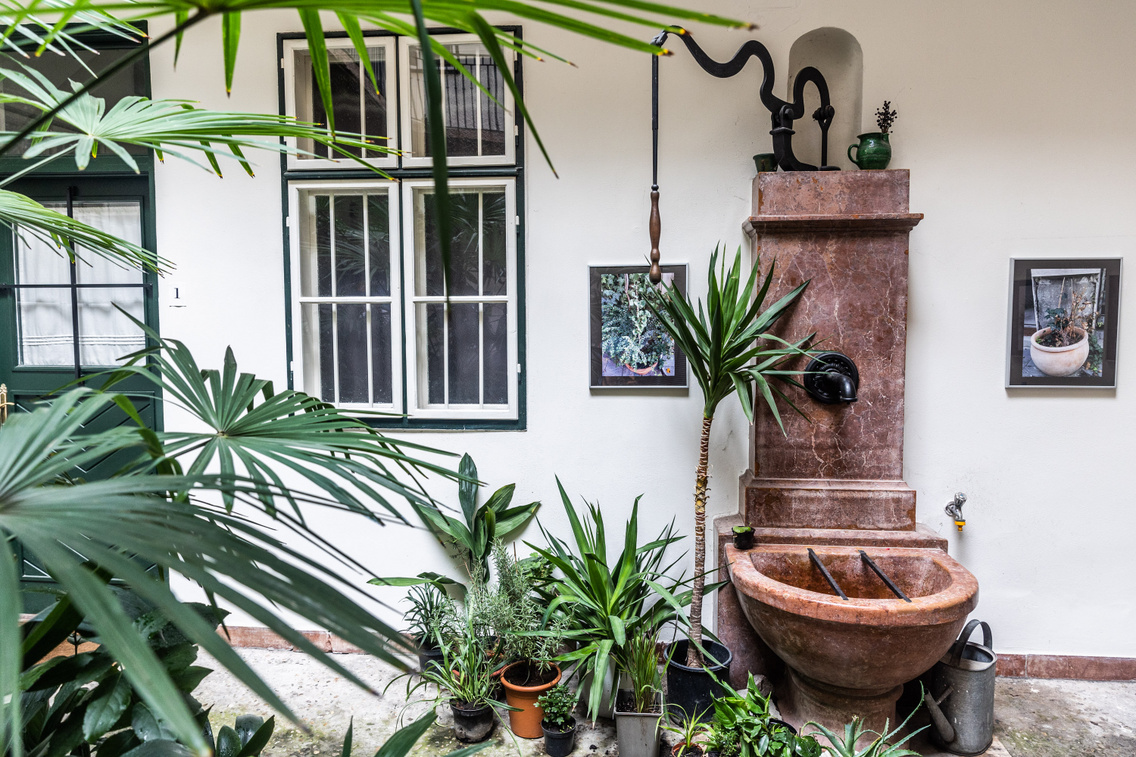
An Unexpected Sanctuary: The Újlaki Synagogue
Nestled amidst the bustling cityscape of Budapest lies a unique house of prayer: the Újlaki Synagogue. Located at 49 Frankel Leó utca, just north of the Császár-Komjádi Sports Pool, this synagogue offers a surprising juxtaposition of tradition and modern living. Standing tall since 1887, the Újlaki Synagogue was originally built in the eclectic neo-Gothic style. It replaced a smaller, century-old house of worship. Back then, it stood majestically on a vast plot overlooking the Danube, surrounded by a peaceful landscape. Imagine a charming scene: single-story houses, a Jewish slaughterhouse, and communal housing, all coexisting near the synagogue.
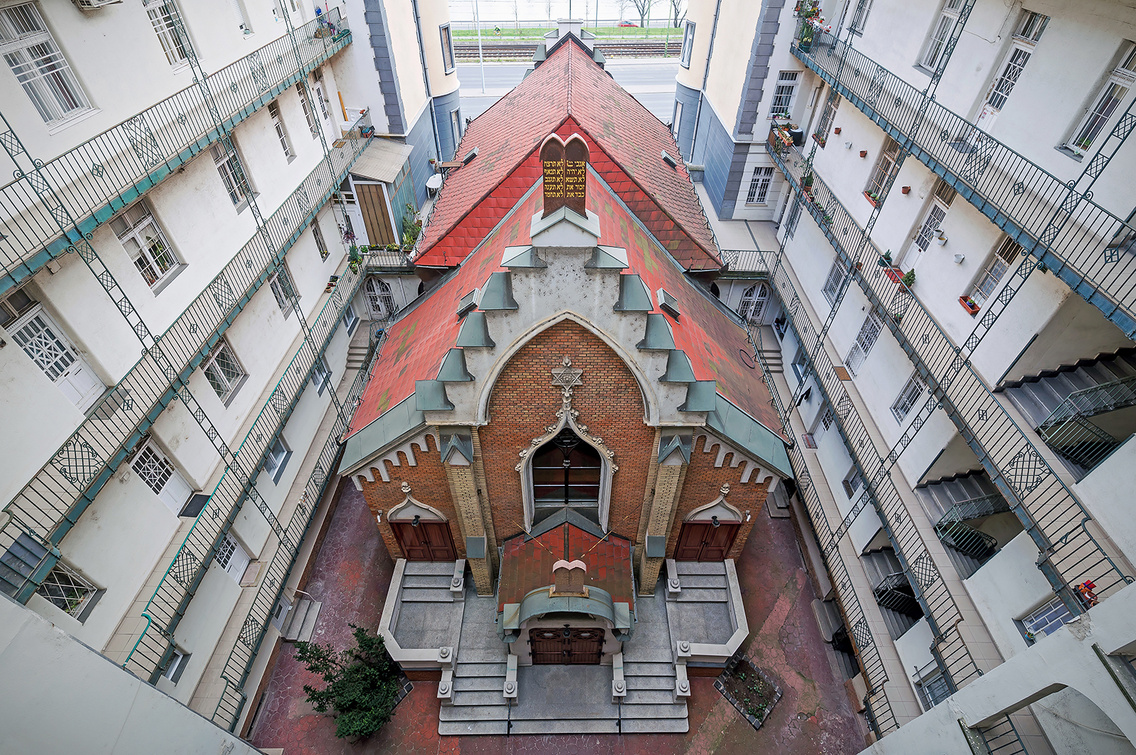
Fast forward a few decades, and the neighbourhood transformed. A wave of apartment building construction swept through the area, reaching towards the Rózsadomb hills. In 1928, a rather remarkable twist occurred. A six-story apartment building, designed by Dezső Jakab and Aladár Soós, was built around the synagogue on three sides. However, instead of obscuring the synagogue, the architects made a clever decision. They left the rear façade, facing the river, completely open. The front façade, meanwhile, can still be accessed through an arcade walkway within the residential building on Frankel utca.
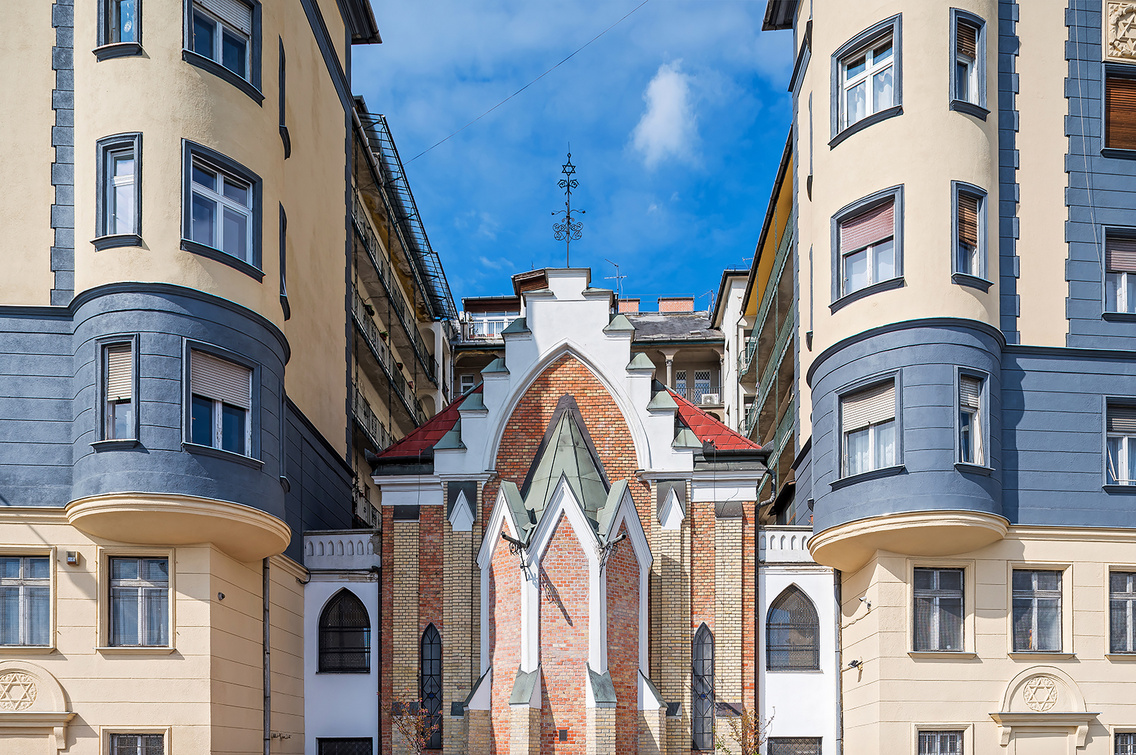
This unique design created a fascinating sight. The red-brick synagogue, a true architectural gem, now finds itself embraced by the suspended corridors of the Jakab-Soós apartment building. These corridors act like a protective shell, framing the synagogue in a way that offers a fresh and intriguing perspective.
(Cover photo: Krisztián Bódis - Budapest Images)

